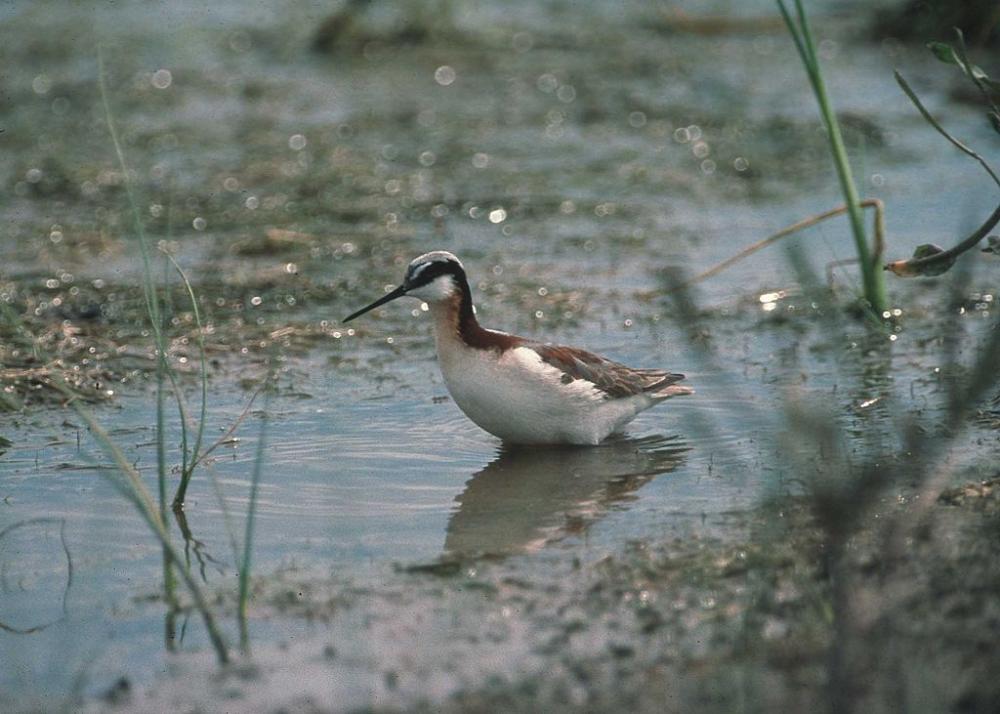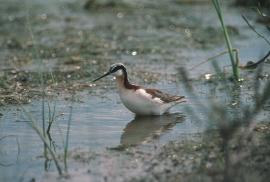Guide to Boreal Birds
Overview
Wilson's is larger than the Red and Red-necked phalaropes and has a much longer, thinner bill. Unlike the others, this species does not have fully lobed toes and so rarely swims, spending no time at sea. When it does feed in water, however, it spins in circles more rapidly than the other two. It is limited to the Western Hemisphere and breeds much farther south than the other phalaropes.
Description
9" (23 cm). A strikingly patterned shorebird with a needle-like bill, pearl-gray head and back, white underparts, black stripe through eye and down neck, and chestnut markings on breast and back. In fall plumage, pale gray above, white below; in this plumage, pale color, more terrestrial habits, and slender bill distinguish it from other phalaropes. Females more boldly patterned than males.
Voice
A soft quoit-quoit-quoit.
Nesting
4 pale buff eggs, spotted with brown, in a grass-lined nest placed in a slight depression on the ground near water.
Habitat
Prairie pools and marshes, lake and river shores, marshy pools along the coast.
Range/Migration
Breeds from southern Yukon and Minnesota south to California and Kansas; also in Great Lakes region and in Massachusetts. Winters mainly in American tropics; a few birds winter in California and Texas.



